- S.D. Eibar ready for maiden La Liga outing
- SD Eibar stengthen ahead of debut La Liga season
- Can ‘Super Mario’ live up to expectations in Madrid?
- MAN IN THE GROUND – Brentford 0 – 4 Osasuna
- Historic Basque derby welcomes S.D. Eibar to La Liga
- Munich to Madrid, via Brazil – Tony Kroos
- Rakitic in Spanish Switch
- Can Spain find redemption in Rio?
- Viva Espana! A season of redemption for Spanish football
- From the old to the new: who can fill the void in years to come for La Roja?
Giant Killers! – But just who are CD Mirandés?
- Updated: 25 January, 2012
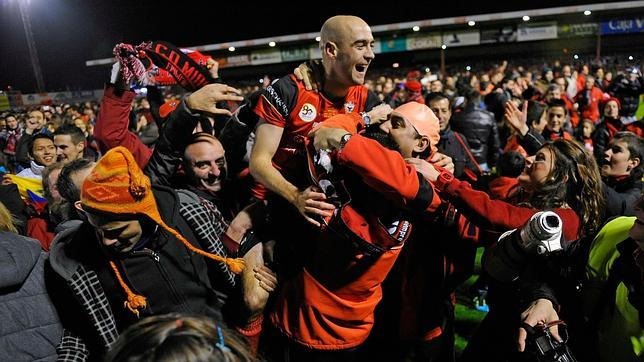
Club Deportivo Mirandés have captured the imagination of the Spanish public with their magnificent run in this season’s Copa del Rey.
After defeating three teams from La Primera on route to the semi-finals, CD Mirandés has become only the second club from Segunda B to reach the last four. This season’s cup exploits aside, very little is known about the club, so here’s your essential guide.
So just who are you?
Miranda de Ebro was a late-comer to the sport of football, only setting up its first official club, Deportivo Mirandés, in 1917. Over the next few years, the club played friendlies against other teams from the Region of Burgos and the nearby Basque Country, often under the name of Sporting Club de Mirandés.
It folded in 1922 and the city had to wait until 1927 for the current club, Club Deportivo Mirandés to be formed. After a season playing at the Campo de Krone, the club moved to a field owned by the RENFE next to the main railway station in Miranda de Ebro.
Unsurprisingly, the ground became known as La Estación.
Due to the city’s position in the far north east of the province, the club joined the Cantabrian Federation in May 1934 and competed in the Regional Preferencia until the outbreak of the Civil War.
Whilst friendly matches were played, the club did not reform until 1942. It took a further two years before CD Mirandés re-joined a league, this time joining the Guipuzcoana Federation.
The club stayed at La Estación until 1949, when the railway company served notice and built accommodation for its staff on the site, whereupon the Municipality stepped in and developed a field to the south east of the town next to the Rio Ebro.
The Campo Municipal de Anduva was officially opened on 22 January 1950 with a match against CD Logrones, although CD Mirandés had started the 1949-50 season at the ground.
CD Mirandés has spent the majority of its history in the Tercera, 50 seasons in total. There was a period in the late 1970’s when the club had a few productive seasons in Segunda B, finishing third in 1978-79 and just missing out on promotion.
Their visits to Segunda B since then have been fleeting, but they did qualify for the end of season play-offs in 2010-11 with a second place finish. After an away win in Guadalajara, CD Mirandés were odds-on to gain a place in La Segunda for the first time, especially after taking an early lead in the second leg.
However, two late goals from Guadalajara sealed the tie in their favour and condemned the club to another season in Segunda B.
Anduva is rudimentary, but has seen some work in the past few seasons. The main west stand, which has its bench seating truncated as it approaches the southern end, gained a new roof for the start of the 2005-06 season.
This shallow cantilevered cover replaced the old propped roof that looked like it was about to crumble. Anduva’s most substantial build is the covered terrace on the east side of the ground. This terrace holds over half of the ground’s 6,000 capacity, under a high, propped roof.
Then in 2010 a new all-seater stand went up behind the southern goal. It was officially inaugurated on 24 November with a friendly against Real Sociedad.
The northern end features a narrow terrace, a multitude of messy advertising hoardings and a bar in the north-east corner. Should they gain promotion, one wonders if the club would sacrifice the training pitches behind the north goal and erect another stand?
Firmly in the public eye following this season’s cup run, the club also sits atop of Group II of Segunda B. With promotion to the Liga Adelente a distinct possibility, I think you are going to be hearing a lot more of CD Mirandés.
Follow @icentrocampista

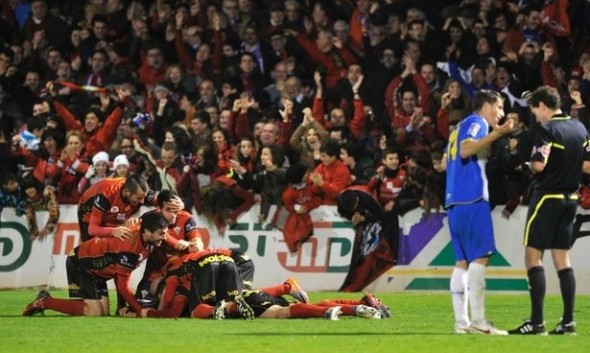
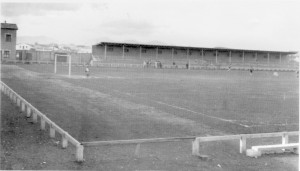
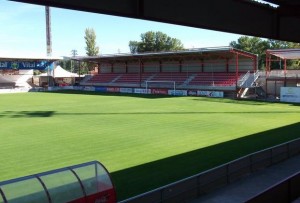
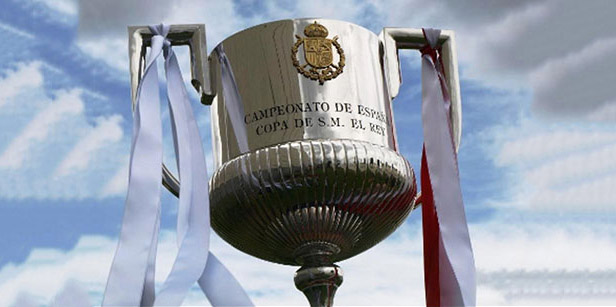
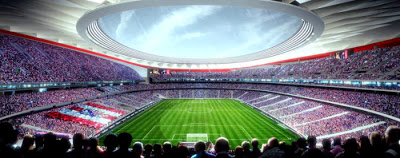



One Comment
You must be logged in to post a comment Login